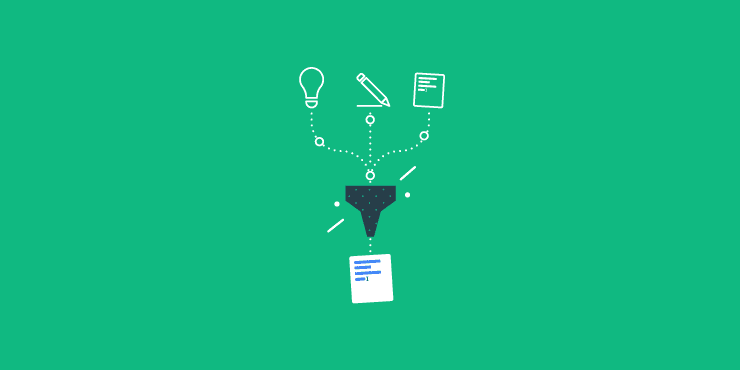Last updated on 24th April 2024
In this article we’re going to take a look at 15 strategies for managing multiple projects simultaneously.
Managing multiple projects can be difficult, but in most cases it’s a necessity for a business to be profitable.
Even if you think you have a good handle on your projects, 96% of people feel the businesses they buy from have room for improvement when it comes to effective communication and project management.
So, with that in mind, let’s take a look at 15 strategies you can use to help you manage multiple projects effectively.
How to manage multiple projects: 15 strategies
1. Use a project management tool
First things first, if you’re managing multiple projects and you don’t yet use a project management tool, you need to start using one, like, yesterday!
Project management tools exist to solve the very problems that can arise from juggling multiple projects, whether that’s miscommunication, losing files, or scheduling issues.
And, we get it, project management tools can be daunting at first. It can feel like a big learning curve and like you’re changing your whole process.
That’s why we made Project.co the easiest project management tool to get started with. And we’re not just saying that. We were actually voted #1 for G2’s Easiest To Use Project Management Software in September 2023.

Project.co brings your projects, tasks, files, notes, payments, time tracking, document approvals, and all related 3rd party tools together in one place, so that your teams and clients can collaborate with ease.
2. Make a to-do list
If you’re spinning a lot of plates, one simple thing you can do straight away that won’t take much time or effort is write a to-do list.
It’s not the most ground-breaking project management tactic out there, but it works. To-do lists help us to manage our tasks without being overwhelmed, which can reduce anxiety and stress. So not only are to-do lists great for your projects, they’re good for your mental health too.
If you want to take your to-do list digital, then check out this article where we reviewed some to-do list apps. You can also use the checklist feature in Project.co to tick off your tasks as you complete them:
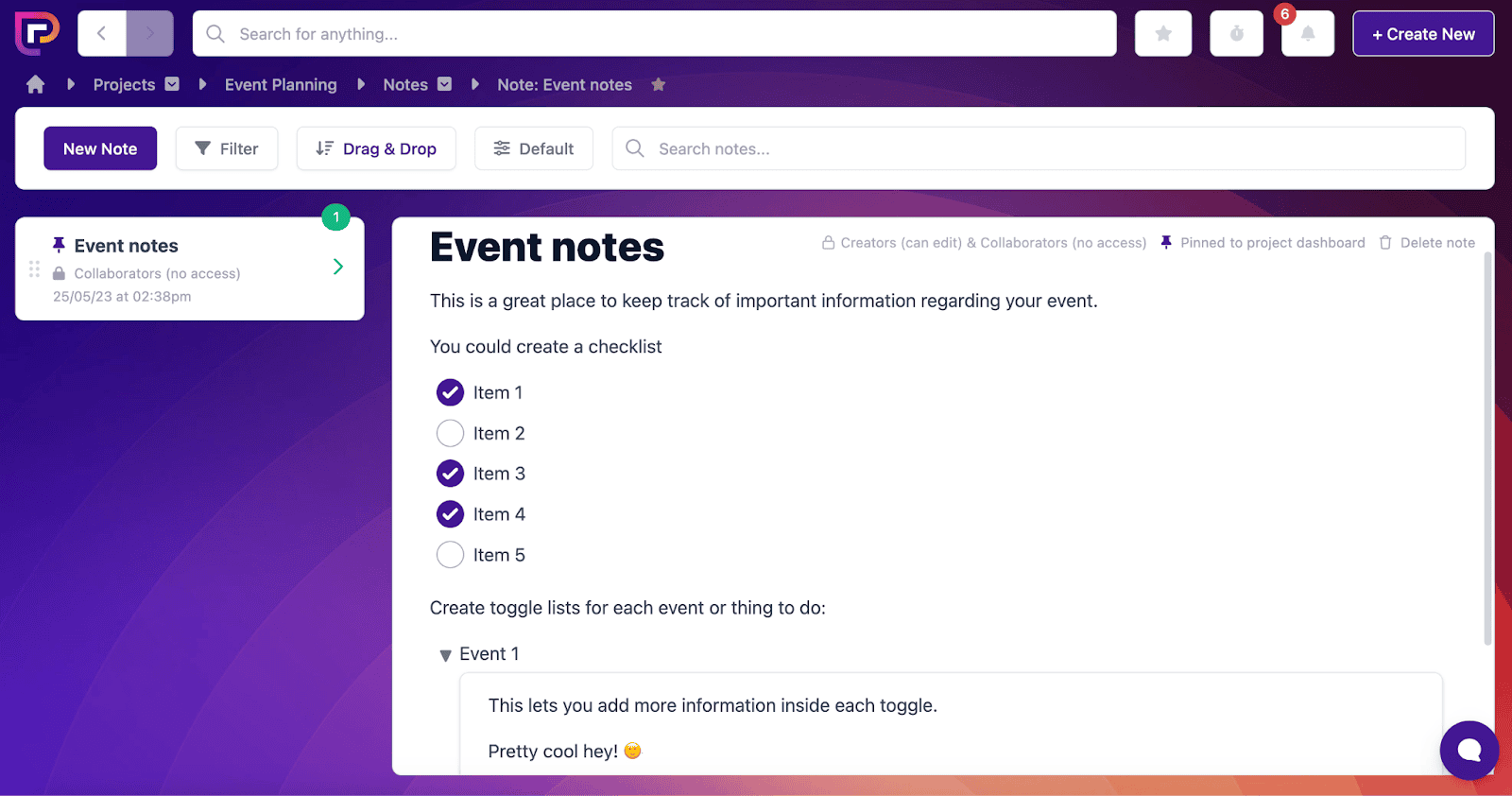
Digitising your to-do list can increase efficiency and reduce the chance of re-work. According to our Communication Statistics 2020, 71% of people who manage their daily tasks using an online project management tool feel it’s easy to get an exact overview of where projects are up to in their workflow. This drops to 52% for those using paper to-do lists.
3. Implement time blocking
Time blocking is a great way to ensure that you’re effectively splitting your time between multiple projects. As the name suggests, this practice is essentially cutting your day up into blocks so that you can dedicate different periods of the day to different tasks. Here’s an example of a fully blocked out day in Google Calendar:
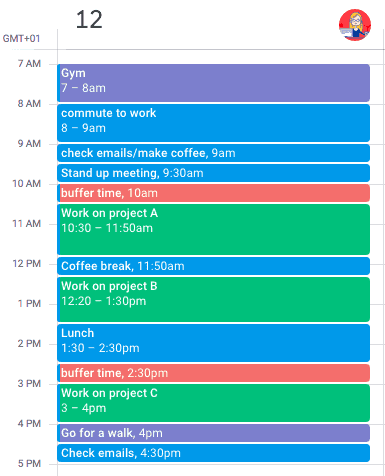
When blocking time in this way, it can help to create a colour code so that you can see – at a glance – how you’re splitting your time. In the above example, purple is for personal tasks, blue is for small admin tasks and breaks, green is for project work, and red represents buffer time.
Buffer time is imperative when using time blocking to manage projects. Buffer time refers to short blocks in the day that you keep free (for example, 30 minutes in the morning or 10 minutes on either side of a meeting) to make space for the inevitable unexpected tasks and conversations that may pop up throughout your day.
4. Manage expectations
If you’re struggling to manage multiple projects then there may be an issue with client expectations. It’s important to manage expectations and project scope from the very start, as this will not only make it easier for you to juggle multiple projects but it will also ensure your customers remain satisfied.
One way to manage expectations is through your timeline. For example, if you know you can complete a task in one day, think about setting this with the client as a three-day task. That way, you can give yourself the breathing room to get busier with multiple projects (if the opportunity arises) without disappointing or letting down your current clients.
And, if you don’t happen to take on more projects during that time, then you can send your deliverable earlier than planned, exceeding client expectations!
5. Break projects into smaller tasks
Some projects can take weeks, months, or even years to complete. By breaking your projects down into smaller, more manageable tasks, you can tackle things one step at a time and measure your progress effectively.
This is another area where a project management tool like Project.co can be really useful. The tasks tool in Project.co allows you to plot out your project, assigning dates, team members, and even attaching notes and files to each task:
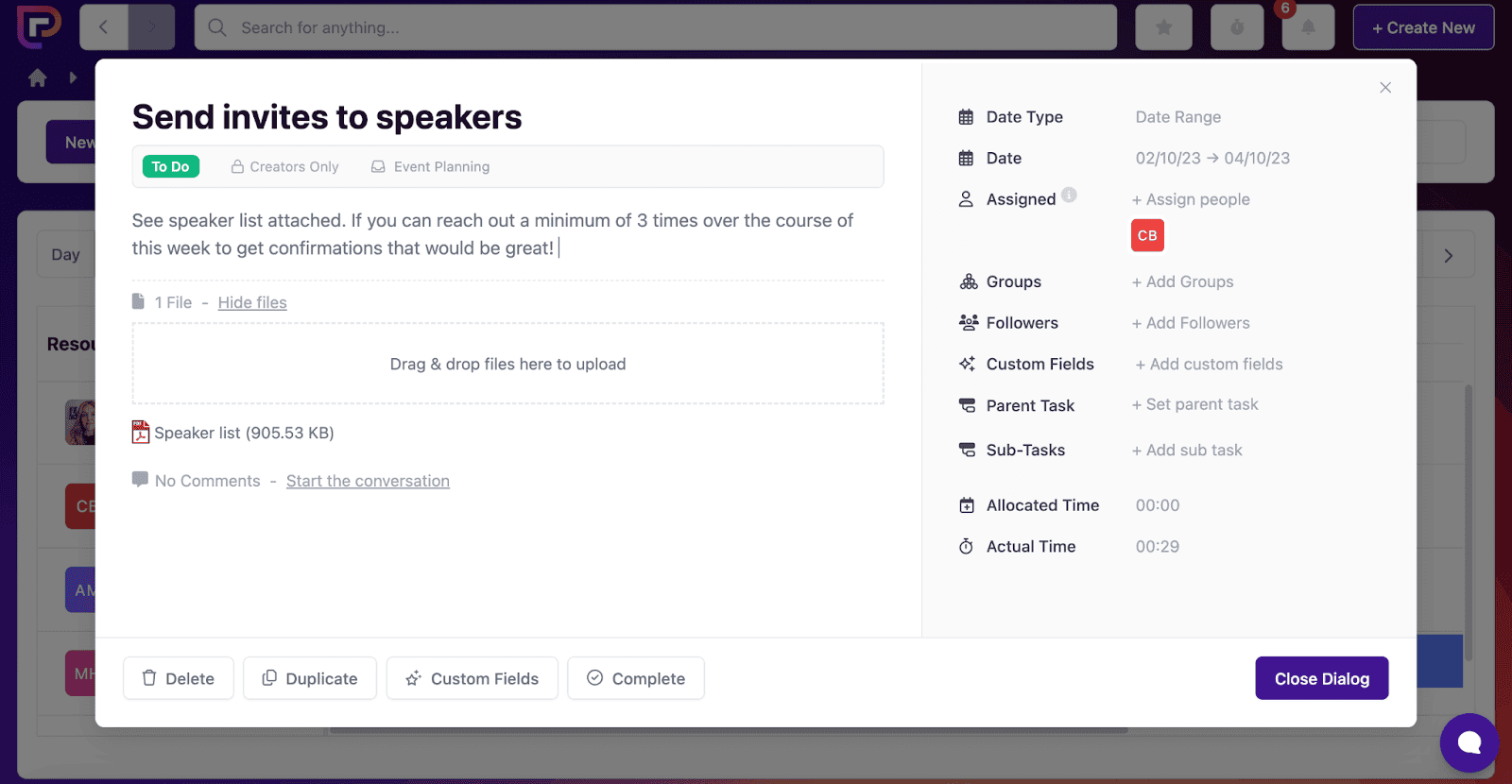
You can view tasks in a number of different ways (such as calendar, scheduler, and kanban) to help you understand if – and where – any bottlenecks are forming.
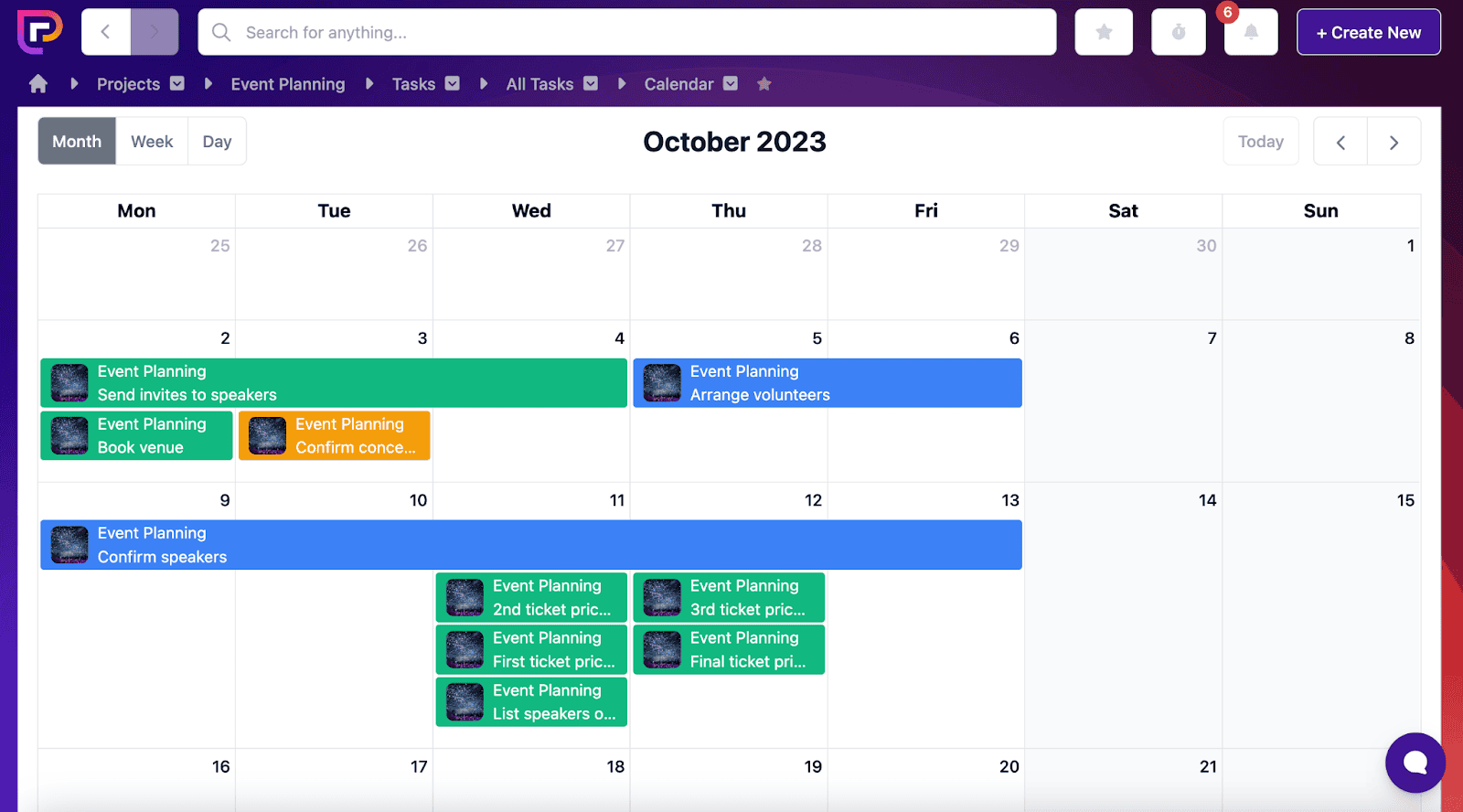
You can then use the simple drag-and-drop functionality to move tasks around so that you can continue to nudge all of your projects towards the finish line.
6. Prioritise urgent tasks
When breaking down your tasks, it’s important to note the difference between tasks that are urgent, and tasks that can be done at a later date.
Completing urgent tasks across multiple projects will allow you to keep everything moving forward efficiently, so you can stay on track and meet your deadlines.
Some project management tools can help you to prioritise your urgent tasks with custom statuses or tags.
With Project.co, you can quickly and easily set up custom fields to give your tasks a priority rating – for example, high, medium, or low. Check out how it works in this short video:
The ability to group your tasks by priority is especially helpful for giving you quick access to your most urgent tasks.
7. Delegate tasks
So, what about tasks that aren’t urgent?
For those, we’d recommend taking a look at them to see how many can be delegated to different team members.
Delegating tasks is a must for effective project management. It gives different team members the freedom to utilise their own unique skills and expertise, and frees up project managers to work on more high-priority tasks.
Plus, it’s not all about productivity. Task delegation can increase a sense of ownership and accountability among your teams that can lead to greater job satisfaction.
Using a project management tool like Project.co makes it easy to delegate tasks. The calendar and scheduler views allow you to take a look at everyone’s workload:
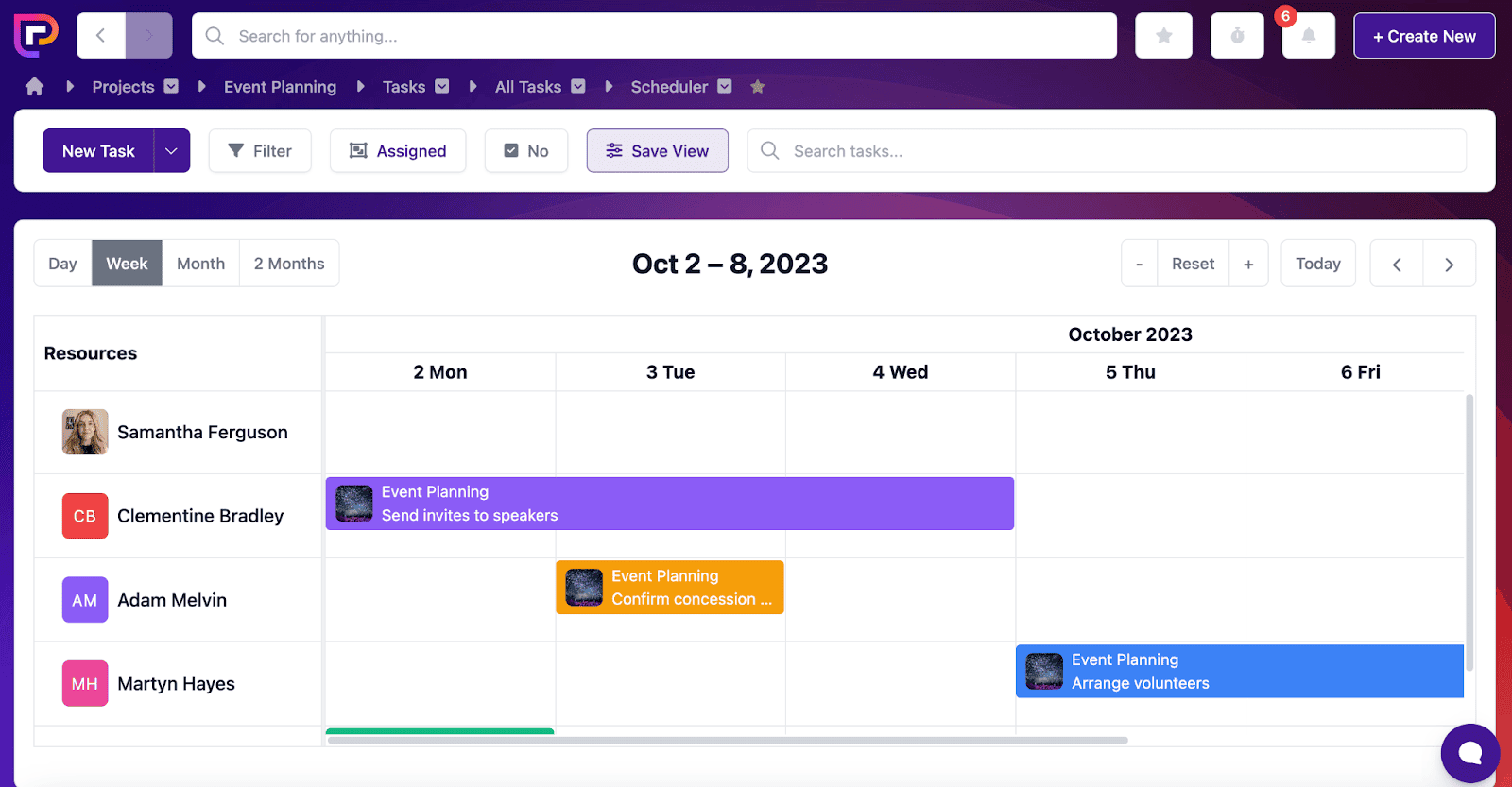
Then, all you need to do is drag-and-drop tasks from one team member to the next in order to delegate and spread the work of multiple projects across your team.
8. Visualise tasks
It may sound simple, but visualising tasks can make your projects easier to manage. One of the most popular visual methods of project management is Kanban.
Kanban is Japanese for sign (or billboard) and it got its name from the visual boards that are used in this methodology to help workers understand where their projects are up to. Here’s an example of the Kanban view in Project.co:
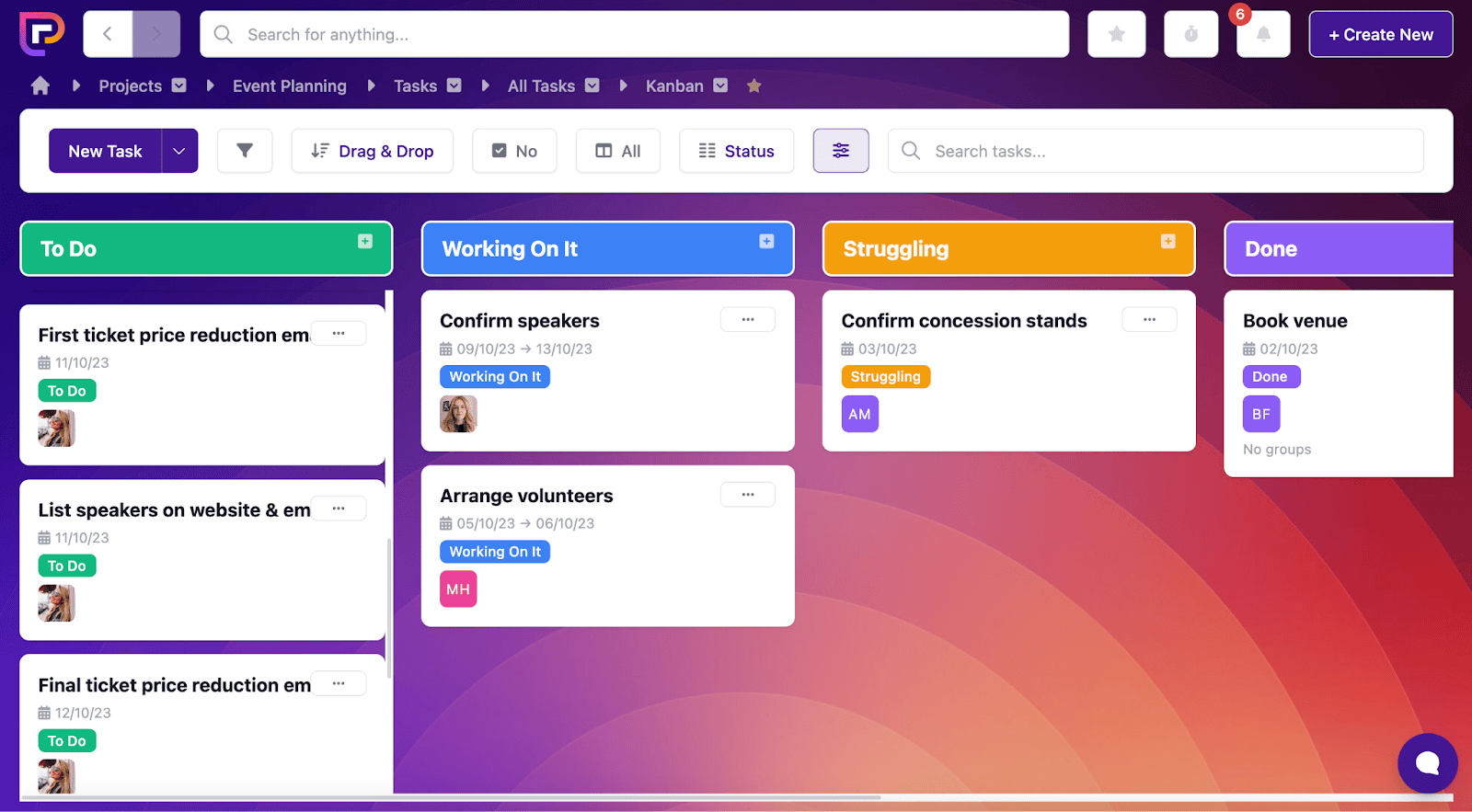
Kanban allows you to get a snapshot of your projects so you can see where they are up to, what tasks need to be completed, and which teams are involved.
Although Kanban was first developed by Toyota in the 1940s, adoption of this method is still growing to this day.
And that’s because it works.
According to Kanban adopters, 87% find Kanban to be more or much more effective than other methods [of managing projects].
9. Communicate effectively
Communication is everything in project management. From how you communicate with your internal teams, to how you communicate with your clients and stakeholders, it all has an impact on how effectively you can manage your projects.
After all, when communication lines break down or communication is unclear, this can lead to a whole host of issues, ranging from misunderstandings that result in re-work and poorly managed expectations that could impact project timelines and progress.
So, to manage multiple projects successfully, you need to ensure that communication is clear. One way to maintain a consistent level of communicative transparency is to keep all discussions in one centralised place.
In Project.co, we call this the Discussions tool:

When all communications occur in the same place you can rest assured that there will be no crossed wires, no missed messages, and no misunderstandings. This can help you to focus on your project work and worry less about communication issues.
10. Set realistic deadlines
One of the most difficult things to juggle when dealing with multiple projects is deadlines. This is because the more projects you have, the more difficult it can be to meet your deadlines – especially if you’ve set turnaround times too tightly.
When taking on new projects it’s important to leave a little wiggle room either side to help you manage your deadlines. If you’re not so busy then it can be tempting to forgo this wiggle room and just try to complete projects as fast as possible – after all, time is money.
BUT…
It’s crucial to remember that sometimes things happen beyond your control. For example, half your team could end up sick or you could be called to put out fires elsewhere.
The more realistic you can be with your deadlines, the more you’ll be able to prepare for every eventuality, and the less likely it will be that you’ll disappoint clients.
11. Keep project information in one place
Speaking of keeping communications all in one place, why not take it one step further and keep ALL of your project information in one place?
Keeping everything to do with your project – files, payments, time tracking – in one secure location can help you to avoid costly rework and ensure you communicate effectively with both team members and clients.
We’ve already told you that Project.co has the capability to do all of this, but did you know that with our embeds feature you can work in 3rd party tools without ever leaving your project?
That’s right. You can work on everything from Google Docs to Frame.io video files without leaving your project:
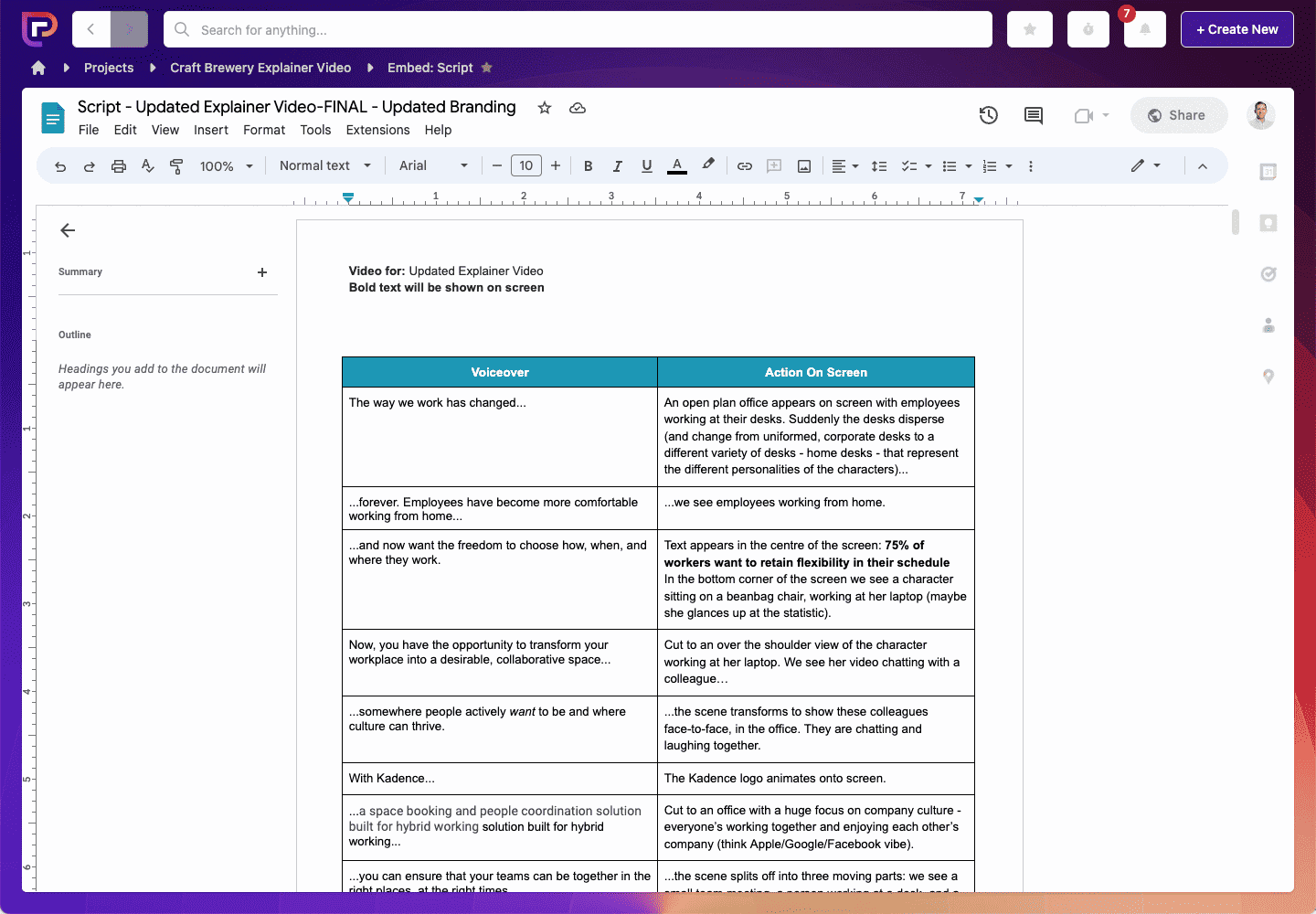
This not only allows you to make changes quickly, but it makes providing feedback effortless for your clients too.
12. Track your time
When you manage multiple projects, you need to understand how much time you spend on each of those projects. This information can be invaluable when it comes to pricing your projects and understanding how much of a workload you can handle before you need to hire new team members – something that no business should take lightly!
Time tracking couldn’t be easier with Project.co. Your team members can enter their hours manually or set a timer to run in the background:
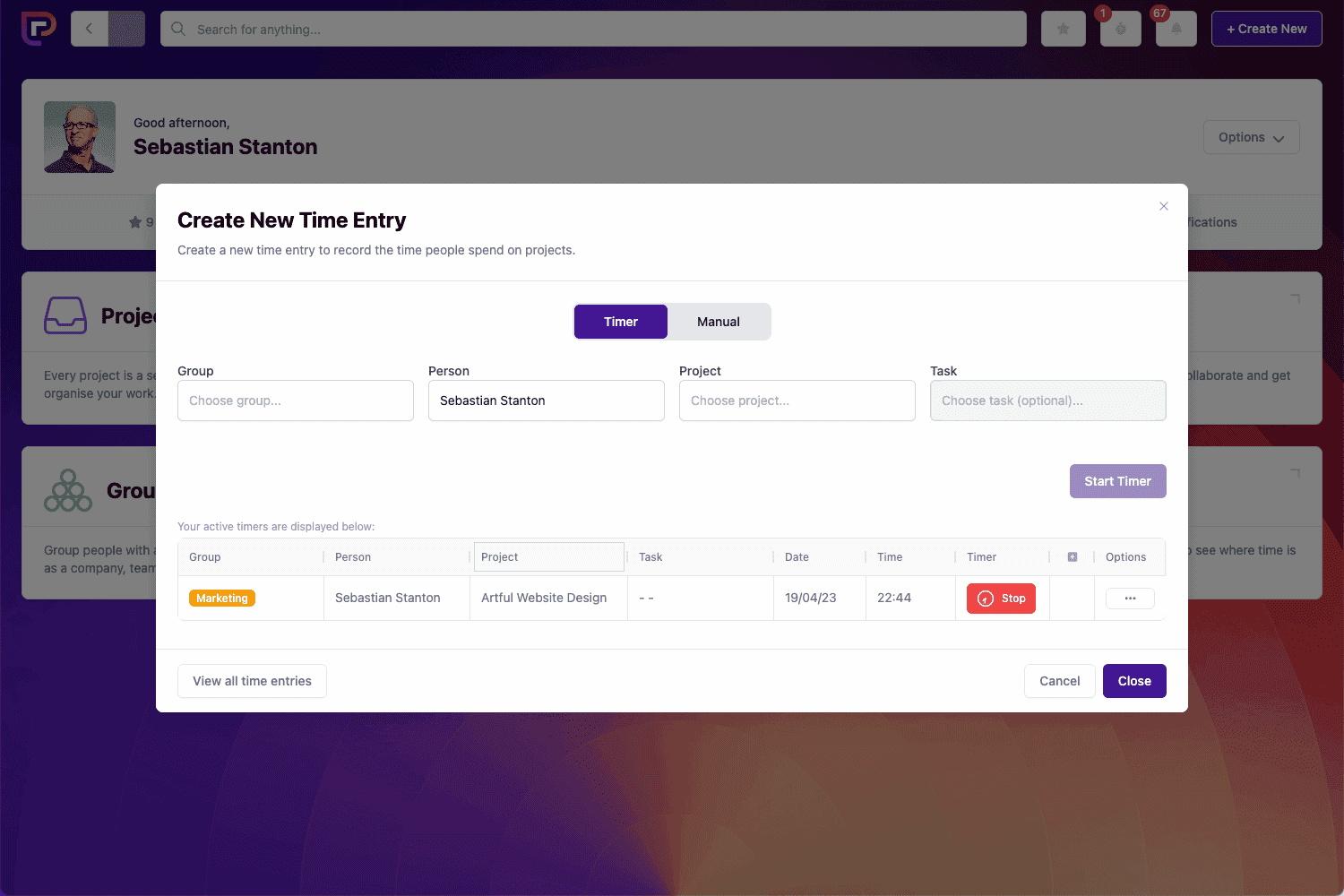
All you need to do is select the person, the project and the task (if applicable) and hit start. When you’re done, hit stop.
Soon, you’ll build a backlog of time tracking data that you can use to make better business decisions in the future.
13. Embrace automation and AI
There can be a lot of repetitive, menial tasks involved in managing projects, such as email responses and data entry. And when you have lots and lots of projects, the time spent on these tasks can really add up!
Enter: Automation and AI.
Automation can help you to eliminate the repetitive tasks involved in managing projects and free up time for you to focus on the more critical aspects of project management.
And AI can help you even further by giving you a jumpstart on project work. According to new data by Exploding Topics, over 77% of companies are now either using AI or exploring the use of it.
Project.co users can access their very own AI assistant from directly within the Notes feature. All you need to do is enter a forward slash (/) and choose AI assistant from the menu:
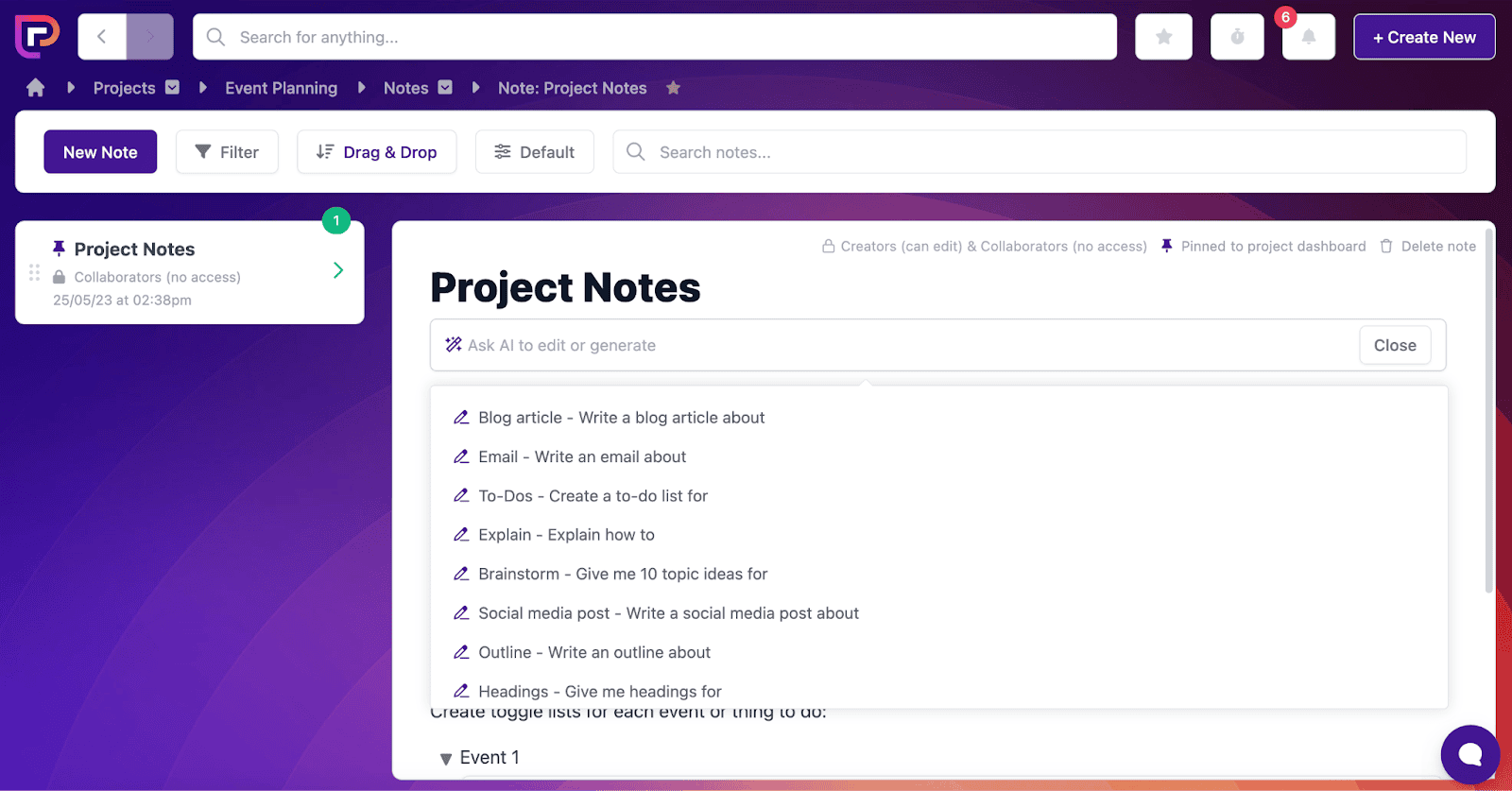
From there, you can ask the AI anything you want or choose from the prompts to help you get started.
14. Optimise your workspace
If you want to be more efficient then optimising your workspace is a great place to start. This means making your desk or office space a clutter-free, quiet place, preferably with lots of light and minimal distractions.
According to research conducted by HOK, an award-winning architecture firm in New York, daylight features in a building can help employees to regulate their circadian rhythms, which can reduce stress and enhance performance.
It’s also important to take regular breaks from your workspace to walk around and get fresh air. This can reduce the chance of burnout and keep you feeling productive and motivated, so that you can tackle your projects with enthusiasm!
15. Be flexible
Naturally, things can change over the course of a project. With multiple projects on the go, it helps to be flexible in the face of change.
So if you see bottlenecks beginning to form, you could try to delegate some tasks to other team members, or allocate more time to future projects if you have existing ones that are taking longer to complete than you anticipated and still taking up space in your schedule.
TL;DR: 3 top tips for managing multiple projects simultaneously
If you don’t have time to read the whole article (we get it, you’re busy managing tons of projects!) then these are our 3 top tips to take away:
1. Use a project management tool
2. Implement time blocking
3. Be flexible
Final thoughts
If you have multiple projects to manage and you DON’T use a project management tool, you’re only hurting yourself!
Project management tools have been designed to solve this very pain point. And using one could possibly free you up to take on even MORE projects – helping you to grow your business.

